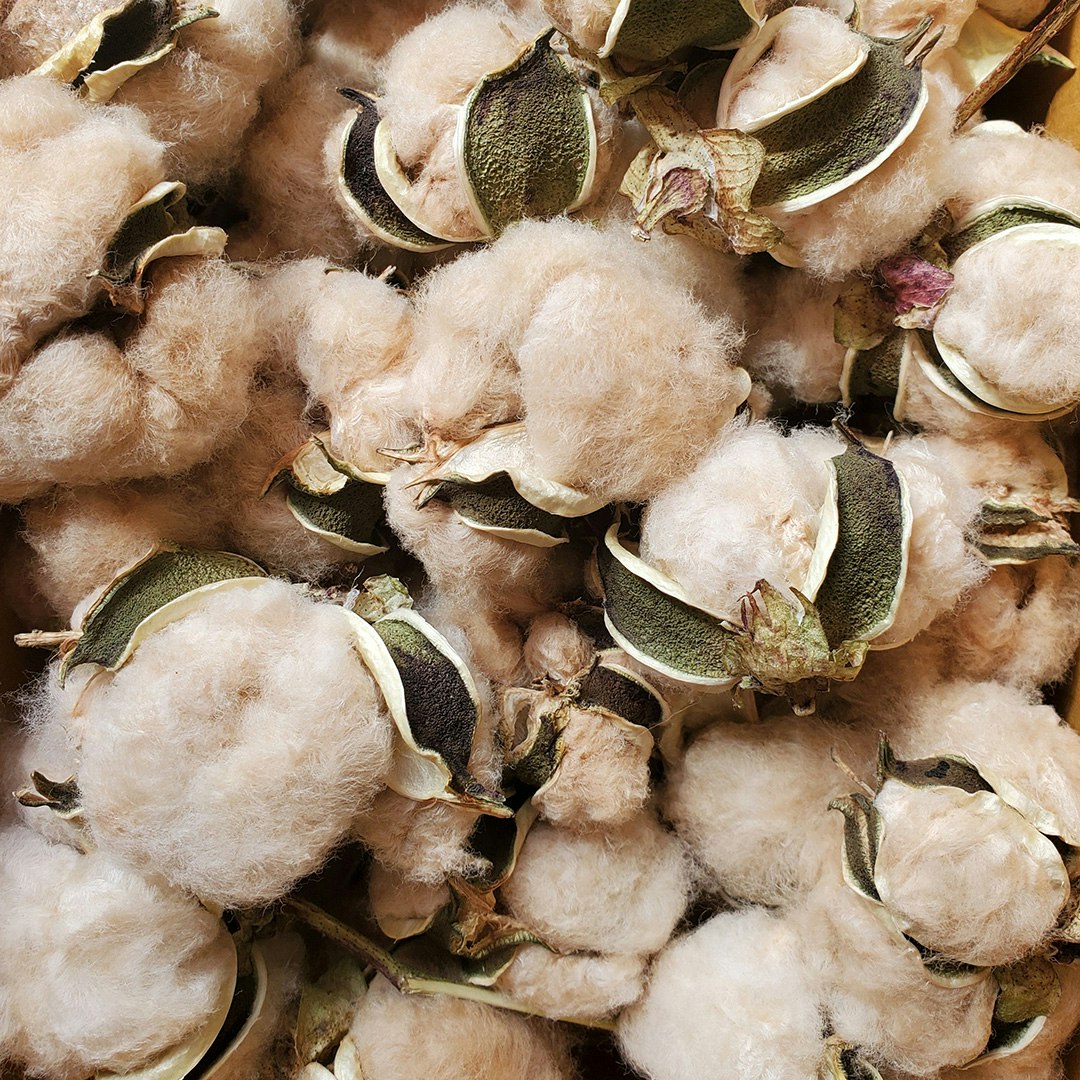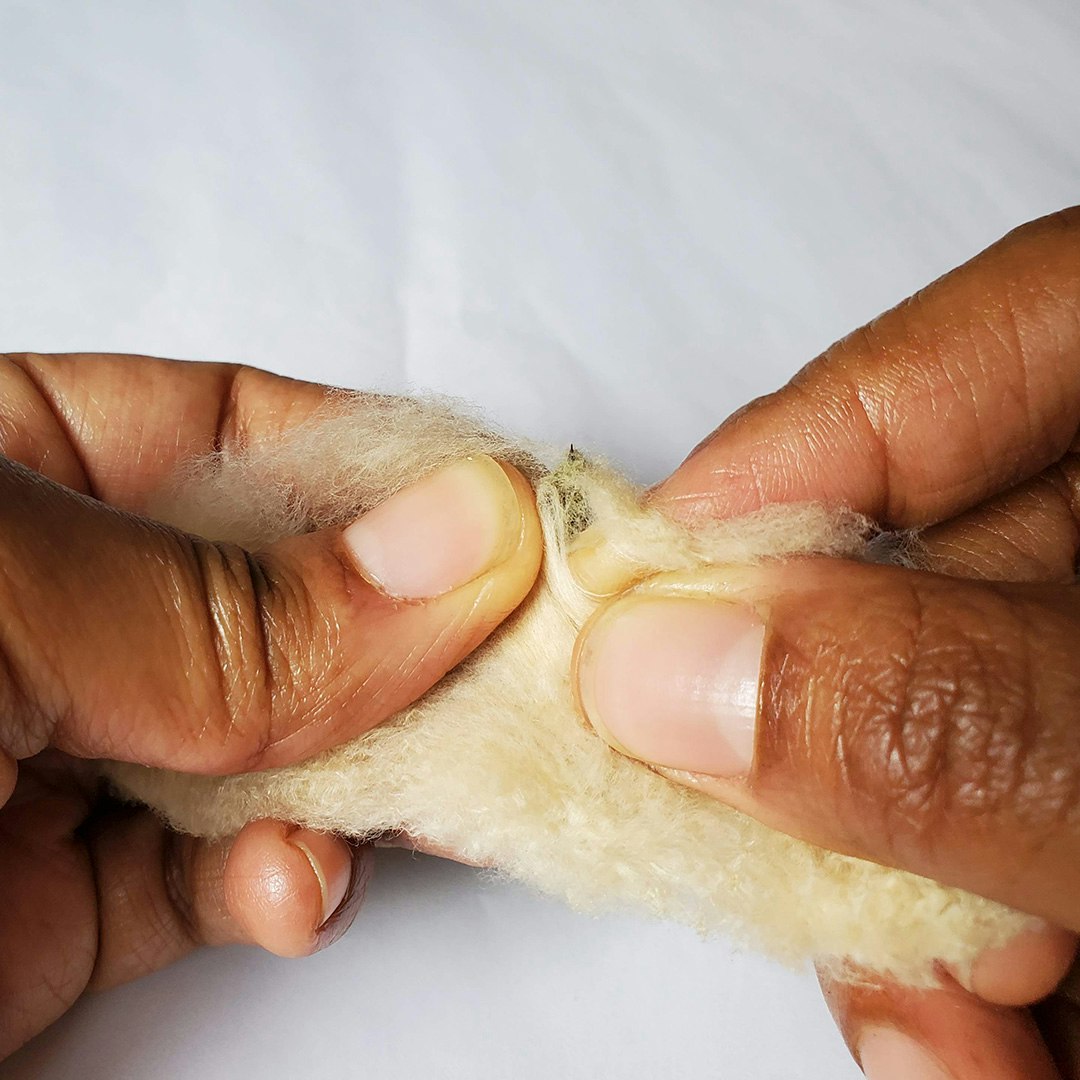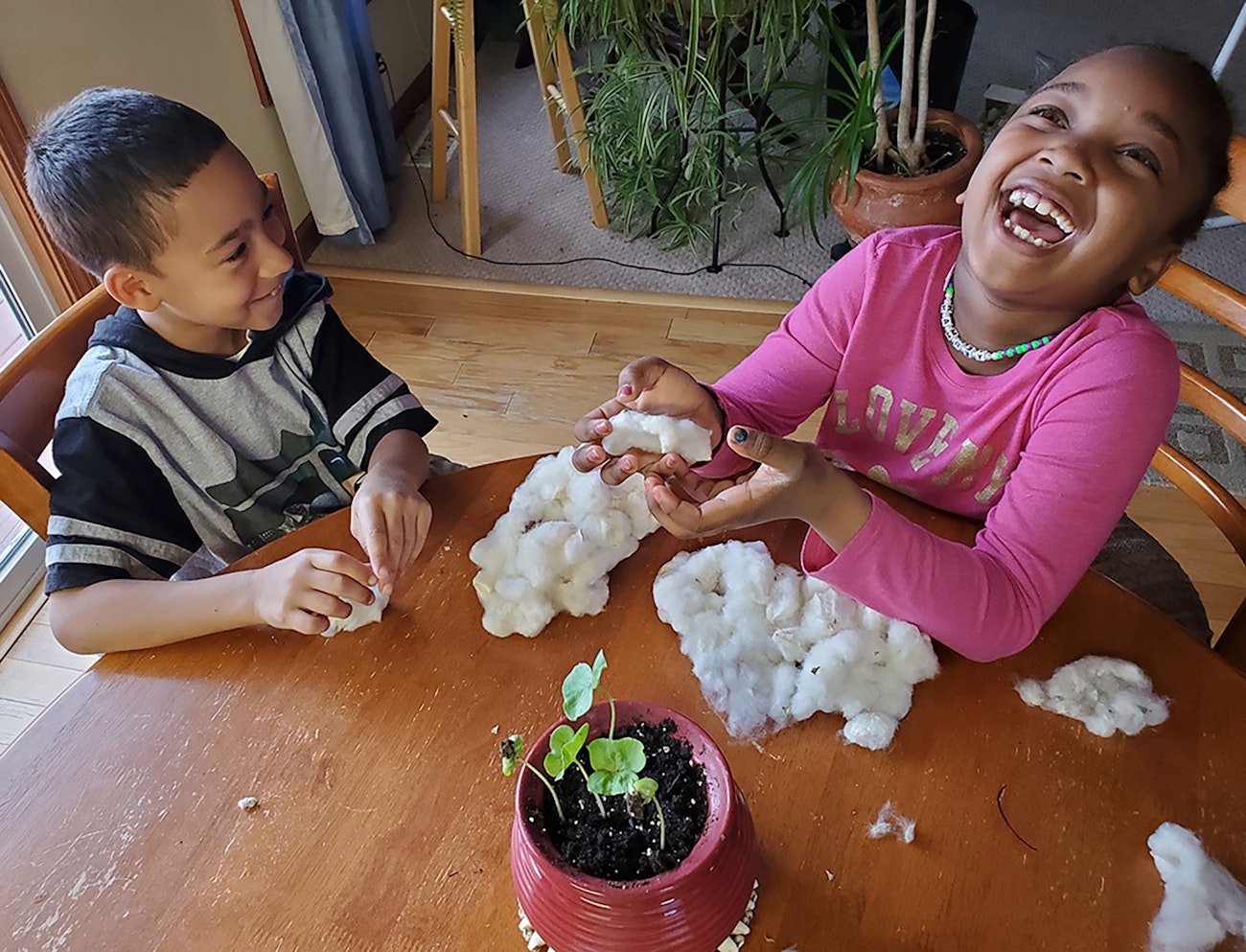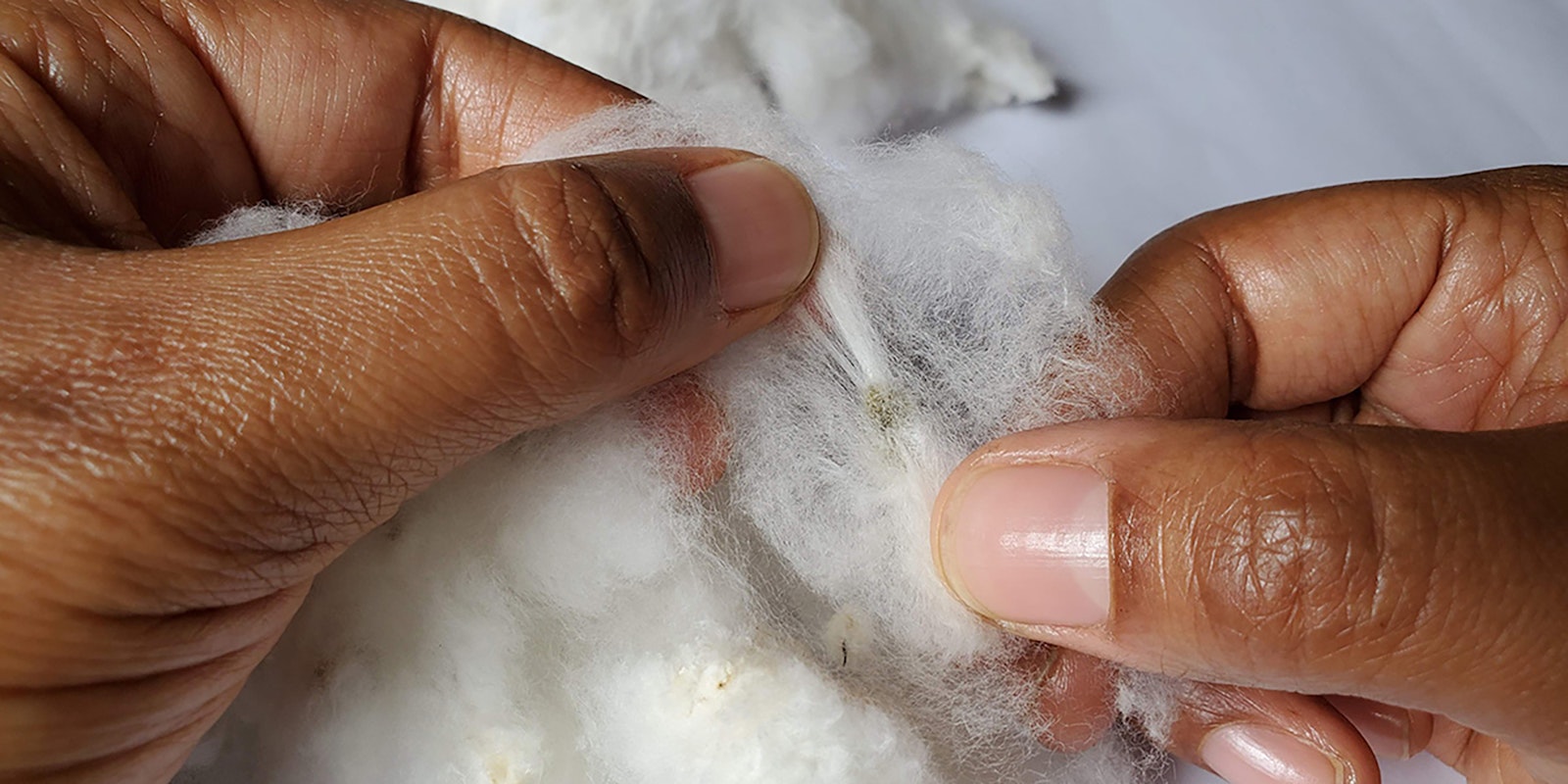As handspinners, we indulge our senses with each new yarn that is spun. We are entranced and soothed as our eyes watch the twist travel through the fiber. We fluff, stretch, and tug it into every possible yarn configuration and enjoy that therapeutic zen that comes with it. Ginning your own cotton by hand adds another layer of bliss to the spinning experience.
At a glance, we just pluck seeds from a nest of fiber. You’ll want to work methodically in order to save time and leave your fiber as lofty as possible after ginning. Understanding how the seeds are organized within a cotton boll and using the best technique for the variety of cotton that you have makes the handginning process go much easier.
 A pile of natural, brown Sea Island cotton bolls waiting to be ginned. Photo by Melvenea Hodges
A pile of natural, brown Sea Island cotton bolls waiting to be ginned. Photo by Melvenea Hodges
Know Your Cotton Boll
Cotton fiber is divided into 2 to 5 separate crescent-shaped lobes within the dried husk. To prepare cotton for ginning, remove each lobe from the husk. Next, stretch the lobe lengthwise. You will notice that there are 2 staggered rows of seeds with 3 to 5 seeds along either side. Stretching the lobe in this way keeps your fiber fairly organized and fluffy while making it easy to find and remove seeds. The variety of cotton you have will determine the type of seeds, fiber texture, and staple length that you will have to work with.
Ginning Cotton by Hand
There are 2 commonly used ways to handgin small amounts of cotton. You can either tease the seeds out or use a single dowel to roll the seeds from the fiber. I have successfully used both methods for smooth and hairy cotton seed varieties. However, one method may work better than the other depending on the variety you’re ginning.
 Melvenea teases a smooth seed from brown cotton. Photo by Waymel Hodges Jr.
Melvenea teases a smooth seed from brown cotton. Photo by Waymel Hodges Jr.
Tease Method
The only tools necessary for this technique are your fingers. This is the best method to use if you are planning to save and plant the seeds from a particular cotton boll, for it’s the most gentle on the seed.
The teasing method separates and fluffs the fiber making it ready to spin. For the finest yarn, pull your teased fiber between your fingers several times as if stretching a piece of taffy. This will orient the fibers in one direction allowing you to spin an effortlessly smooth yarn.
To tease your cotton, stretch the lobes of fiber lengthwise and use a light plucking motion with your thumb and index finger to gently pull the fiber away from each seed. I usually work around the seeds in a circlular direction, as if pulling petals from a daisy. This technique is ideal for ginning hairy seeds and works well if the fiber has a longer staple length. Teasing smooth seeds requires less effort. Most of them will not need methodical plucking, and the seeds can often simply be squeezed out with your fingers.
 Melvenea gins the hairy seeds from Upland cotton using the single-dowel method. Photo by Waymel Hodges Jr.
Melvenea gins the hairy seeds from Upland cotton using the single-dowel method. Photo by Waymel Hodges Jr.
Single-Dowel Method
For this technique, you’ll need a smooth, narrow dowel, either wooden or metal, about 18 inches long. It should be strong enough to withstand heavy pressure. You will also need a block of wood or stone at least 4 inches thick to provide a platform for the dowel as you roll it. You probably already have these items. Try a ¼-inch steel rod from the hardware store and a brick or old, thick book. This method works like a dream for smooth-seed or short-staple cotton varieties. It’s a bit tougher to do with hairy-seed varieties but still works with careful prep.
The seeds will be forced out of the fiber as if rolling out dough with a rolling pin. Stretch your cotton lobes lengthwise, then place one lobe on your platform. Position yourself above the platform in order to apply enough force. Place your cotton on the platform widthwise. You’ll only be able to roll out a few seeds at a time. If you are ginning hairy seeds, position your roller isolating a few seeds within the fiber from the rest. Using the palms of your hands, roll the dowel forward with a short pulsing force that is in constant contact with the platform to work the seeds out. If you lift up even slightly, you could crush the seeds within the fiber. Ginning smooth-seed varieties works the same way as those with hairy seeds, except you can easily push more seeds out at the same time and with less effort.
The fiber will become fairly compressed but still have some loft after ginning. I usually use handcarders to fluff and organize the fibers after using this ginning method.
 Kids handginning cotton (or at least that’s what they told Melvenea they were doing). Photo by Melvenea Hodges
Kids handginning cotton (or at least that’s what they told Melvenea they were doing). Photo by Melvenea Hodges
There is so much to gain from ginning cotton by hand, whether your goal is to produce a higher-quality handspun yarn or you’re doing it for the sheer bliss of it. A certain unquestionable power and rarely exercised freedom in ingenuity is realized when processing raw cotton fiber into an exceptional end product.
Interested in learning more about cotton? Check out our e-book here.
Melvenea Hodges is a fiber artist born and raised in Benton Harbor, Michigan. She is committed to practicing traditional textile techniques in honor and expression of her heritage as an American maker. She intermittently blogs about her latest creations and fiber adventures at traditionsincloth.com.
You should always check local regulations before purchasing, planting, or moving cotton plants and seeds. —Editor
Originally published May 18, 2020; updated July 4, 2022.

